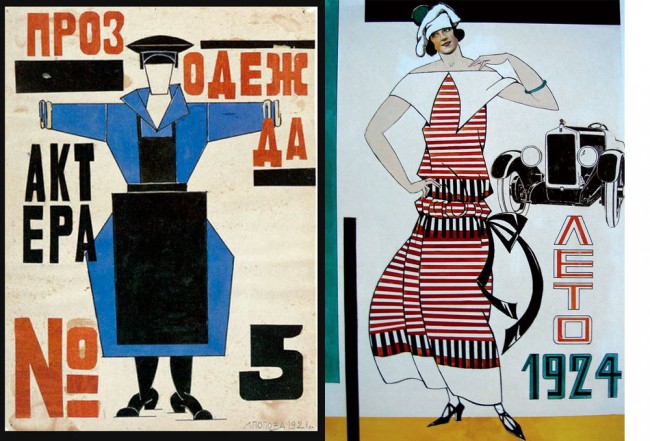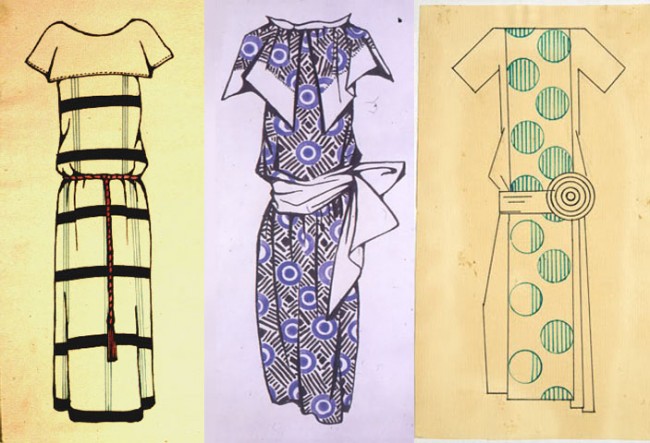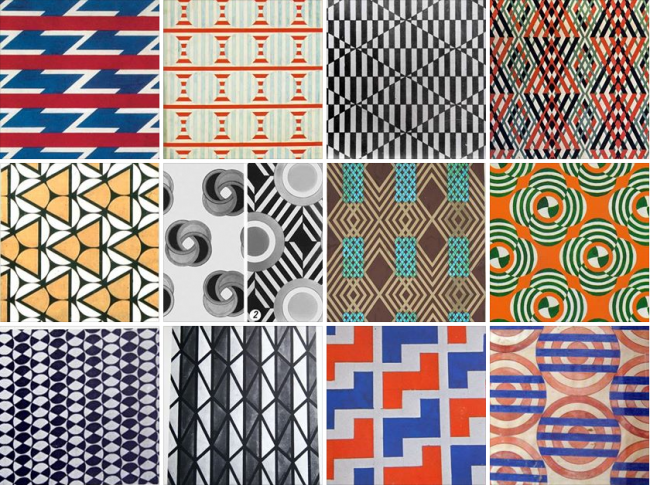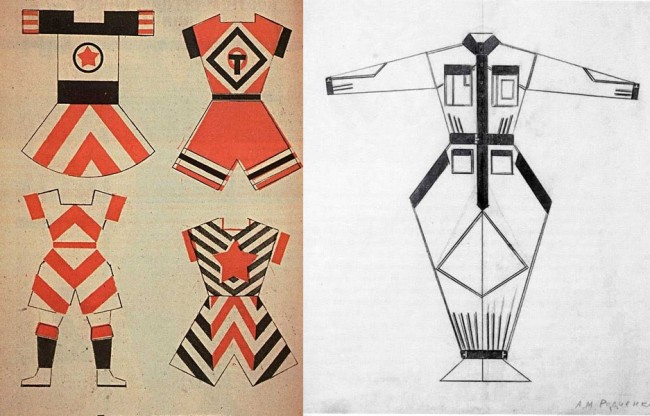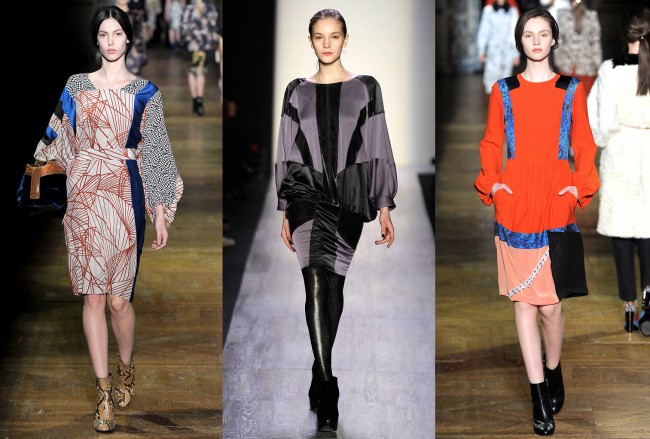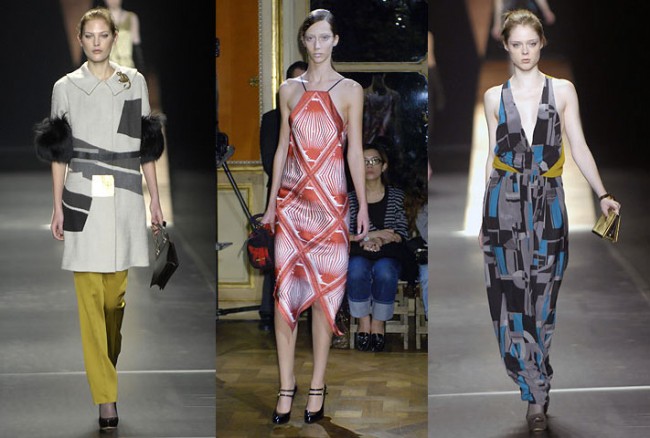Constructivism in Russia in the 1920s
Born as an artistic movement around 1919, Russian Constructivism proposed the ideology of “production art”, that is, art with a social meaning and practical purpose. Stemming from a series of debates and collaborations in INHUK and Vkhutemas*, it counted self-professed “artists-engineers” Vladimir Tatlin, Alexander Rodchenko, Varvara Stepanova and Lyubov Popova among its most passionate advocates. Their extensive work was geared towards a total re-organisation of life and a new form of artistic expression available to the masses, and, unsurprisingly, involved various creative areas, including fashion.
* INHUK – Institute of Artistic Culture; Vkhutemas – Higher Technical Artistic Studios
Russian constructivists saw the human body as a mobile vessel, which required practical, simple, hygienic clothing to increase, rather than obstruct, the work and life efficiency of the wearer. Going away from the symmetry, luxury and convenience of the pre-revolution attire, constructivists favoured simple geometric shapes and complementing, albeit bright, colours in their avant-garde designs. Artists Varvara Stepanova and Lyubov Popova both worked at the textile factory, the Tsindel, designing fabrics and patterns for dresses for publication in the LEF journal (“Left Front of The Arts”). Popova went on to design her own version of the flapper dress, whilst Stepanova collaborated with Alexander Rodchenko on a design of simple linear overalls. Working with materials in an abstract fashion, they aspired to create clothes that equally reflected their artistic vision and practical aims of the time.
Lyubov Popova’s dress designs, 1923-24
Textile designs by Varvara Stepanova
Stepanova and Tatlin also introduced the concept of “prozodezhda” (“production clothing”) and “’specodezhda” (“specialised clothing”), which were designed with anonymity, simplicity and efficiency in mind and abolished decorative elements in favour of revealed stitches and buttoning.
Aimed at factory workers and specialists of selected professions, the clothes had no regard for individual aesthetic preferences or social differences, opting instead to emphasise the practical role of the wearer in the community. Interestingly, sexual differences in clothing were also absent or suppressed, indicating neutrality and utilitarianism as the preferred modus operandi. Like most of the clothing designs, though, they were never produced and thus remained as evidence of the experimental dreams of Russian constructivists.
Left – sports clothing designs by Varvara Stepanova, right – workwear design by Alexander Rodchenko
The enormous influence of Russian constructivism on fashion is evident in collections of later decades. In fact, it was the work of Russian constructivists that introduced the ideas of ready-towear fashion and mass production and defined the earlier concept of modern sportswear. Spaceage paper dresses, designed by Pierre Cardin in 1960s, were advocated by some in the early 1920s and were seen as revolutionary clothing for a utopian society of the future. Traces of constructivist thinking have since appeared in numerous collections of influential brands, including Dries Van Noten, Chanel and Miu Miu.
1, 3 – Dries Van Noten Fall 2011, 2 – BCBG Max Azria Fall 2009
1, 3 – Etro Fall 2007, 2 – Miu Miu Spring 2007
 Evgenia Dorofeeva is a photographer, fashion writer and an avid traveller based in London. Her love of fashion comes from childhood spent in a grandmother’s atelier, while writing is a hobby that is bound to become a full-time occupation. Evgenia’s dream is to create a worthy home collection of evening dresses – story-tellers, performers and fairy godmothers in their own right.
Evgenia Dorofeeva is a photographer, fashion writer and an avid traveller based in London. Her love of fashion comes from childhood spent in a grandmother’s atelier, while writing is a hobby that is bound to become a full-time occupation. Evgenia’s dream is to create a worthy home collection of evening dresses – story-tellers, performers and fairy godmothers in their own right.


